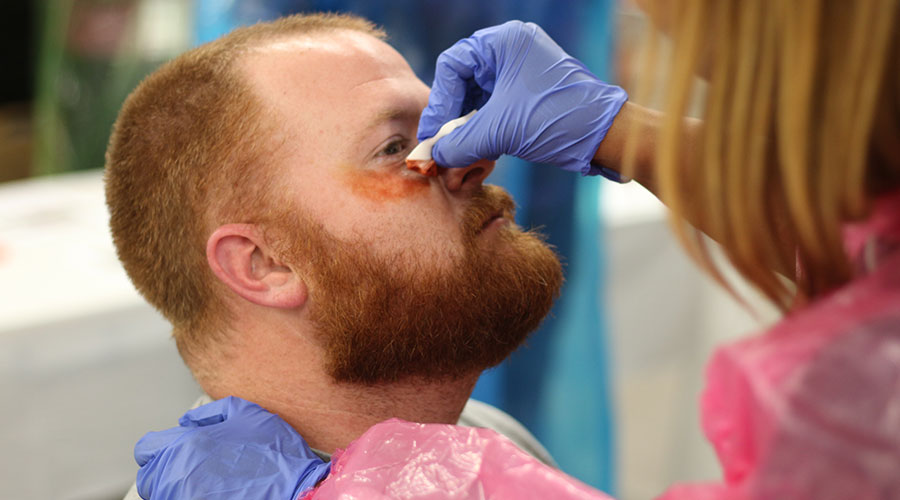
The Best Tricks for Realistic Moulage on a Budget
Just like cheesy special effects can ruin a superhero movie, unrealistic wounds and symptoms can ruin a healthcare simulation scenario. Healthcare simulation training is the gold standard for improving both clinical competence and patient outcomes, but it works best if the scenario seems real. Moulage—special effects makeup for simulation—enhances the realism of your simulation scenarios and provides visual cues for diagnosis and treatment. And, luckily, you don’t need a movie studio special effects department to create it. Keep reading for hacks and tips to create realistic moulage on a budget.
ORDINARY INGREDIENTS MAKE EXTRAORDINARY MOULAGE
Look around your house or office and you’ll probably find plenty of items you can use for moulage. For example, the clear latex caulking you use to seal your bathtub can also be used to create artificial wounds that you can apply to the skin of a manikin or standardized patient. If you have any clear CD cases lying around, you can break them up and embed the pieces in simulated wounds to look like broken glass. Even toilet paper can become part of your moulage arsenal. Take a square of toilet paper, roll it up, apply it to a manikin or standardized patient using liquid latex, and voila—you have raised skin for a scar or the edge of a wound. Other moulage effects, such as fake blood and vomit, can be easily DIYed with ingredients you can find at your local grocery store. Here are a couple of our favorite recipes.
Fake blood
- 1 tsp flour
- ½ tsp red food coloring
- 1 TB corn syrup
- One drop blue food coloring
Fake vomit
- 1 tsp parmesan cheese
- 2 tsp lemon juice
- 1 tsp oatmeal
- 2 tsp apple cider vinegar
Fake feces
- 2 TB peanut butter
- 1 TB chocolate syrup
- Microwave one minute and place in plastic bag
- Cut corner off bag and squeeze mixture out in desired shape and quantity
- Add a few drops of fake blood to simulate blood in feces
When working with food product moulage, make sure there are no participants with allergies, and ensure that the manikin and all work surfaces are cleaned thoroughly when you’re done to avoid rotting or spoiled food in your lab or on your equipment. Find additional moulage recipes here.
PROFESSIONAL PRODUCTS FOR PROFESSIONAL MOULAGE
In some instances, investing in professional-grade moulage tools does make sense. For example, if you are staging a simulation scenario that will last all day you need your moulage to last all day, too. Alcohol-activated makeup is a good option when your scenario uses standardized patients—it is waterproof and can last for days. To create wounds that can be applied, removed and used again, consider using casting materials, such as rubber and resin, as well as professional makeup from special effects suppliers like Smooth-On, Mehron, Graftobian, Skin Illustrator, or Ben Nye. Networking with other sim techs and attending simulation conferences that include moulage training are also great ways to learn about products, techniques, and tricks that can enhance your moulage. For an overview of the importance of moulage, as well as some other resources to browse, check out our blog post, “How to Create Realistic Moulage and Why It Matters.”
To get started, reach out to us here or click the chatbox below to connect instantly. We look forward to working with you!

